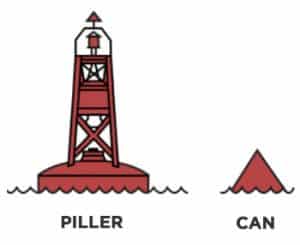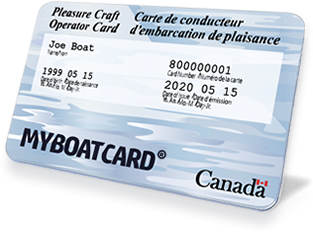Lateral Buoy System
Lateral buoys indicate safe routes by marking the left and right sides of the deepest water. There are two main
types of lateral buoys: port-hand buoys and starboard-hand buoys.
 Port-hand buoys:
Port-hand buoys:
- Are used to mark a danger or the left-hand side of a channel (when facing upstream);
- Should always be kept on the port side of the vessel when traveling upstream;
- May have a single green cylinder shaped topmark;
- May have a light that is green in colour;
- Are flat on top, if they do not carry a light; and
- Are identified by letters and odd-digit numbers.

Starboard-hand buoys:
- Are used to mark a danger or the right-hand side of a channel (when facing upstream);
- Should always be kept on the starboard side of the vessel when traveling upstream;
- May have a single single red cone shaped topmark pointing upward;
- May have a light that is red in colour;
- Have a pointed top, if they do not carry a light; and
- Are identified by letters and even-digit numbers.
REMEMBER: The upstream direction is the direction taken by a vessel when proceeding from seaward, toward the headwater of a river, into a harbor or with the flood tide. In lakes and rivers where this is difficult to determine, the use of cardinal buoys are preferred.

